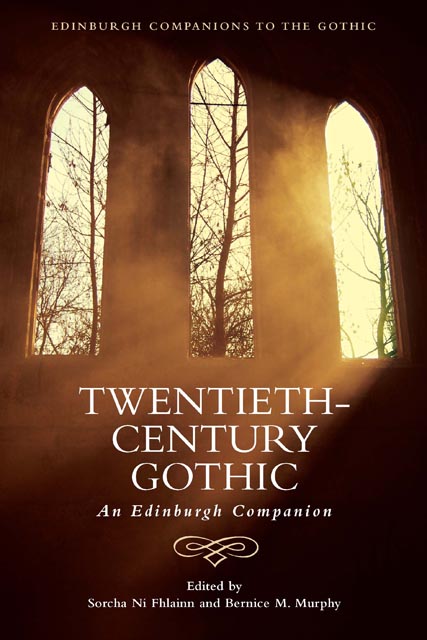7 - Mid-Century Gothic Cinema (1931–79): From Monster Business to Exploitation Horror
Published online by Cambridge University Press: 18 November 2022
Summary
The period between the early 1930s, when Universal Pictures’ Dracula (1931) and Frankenstein (1931) premiered, and the late 1970s, when the European exploitation boom died out, is arguably the most significant to the history of the Gothic in the twentieth century. Numerous films, from The Black Cat (1934) and I Walked with a Zombie (1943) to The Innocents (1961) and The Vampire Lovers (1970), are still hailed as landmarks in cinema history by journalists and critics, and these five decades were also responsible for the emergence of the horror genre as a journalistic label and its consolidation as a specific type of filmic experience. The impact of some of the most significant films of this era has been such that there is no form of popular culture left untouched by them, from literature to television, video games and even breakfast cereals. The various figures in the monster pantheon that surfaced in the 1930s may have originated in nineteenth-century literature and have previously found a long life on the stage, but their transition to cinema immortalised them. In particular, the design and make-up for Count Dracula and Frankenstein's monster, as well as the performances by Bela Lugosi and Boris Karloff, would become so iconic that they remain denotative of Gothic horror to this day. Together with Dr Jekyll and Mr Hyde, they form a ‘foundational triptych’ for the Gothic that has generated hundreds of copycats, sequels and parodies. Universal films also popularised other monsters, such as the Wolf Man and the Mummy, that would become horror staples despite not deriving from literary sources or having solid cinematic precedents.
Gothic cinema experienced key changes during the years bookended by the success of Dracula and Frankenstein and Hammer Film Productions’ failed attempts to modernise their Gothic horror brand and eventual hibernation. These developments include the institutionalisation of the horror franchise as a viable commercial venture and the entrenchment of the monster as a visual source of fear in the 1930s and 1940s; the wide spread use of colour film processes in the late 1950s and the 1960s; and the subsequent rise of openly erotic spectacles in Europe's exploitation films in the 1960s and 1970s.
- Type
- Chapter
- Information
- Twentieth-Century GothicAn Edinburgh Companion, pp. 114 - 128Publisher: Edinburgh University PressPrint publication year: 2022



